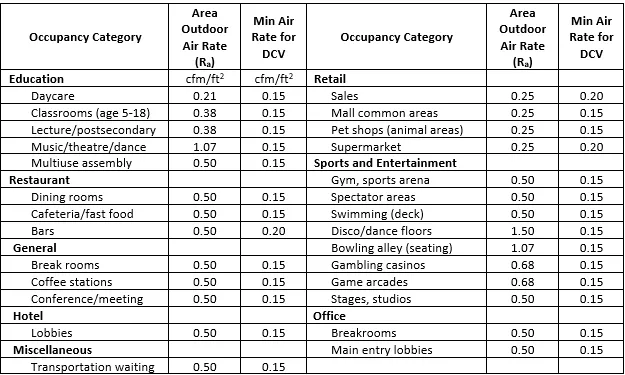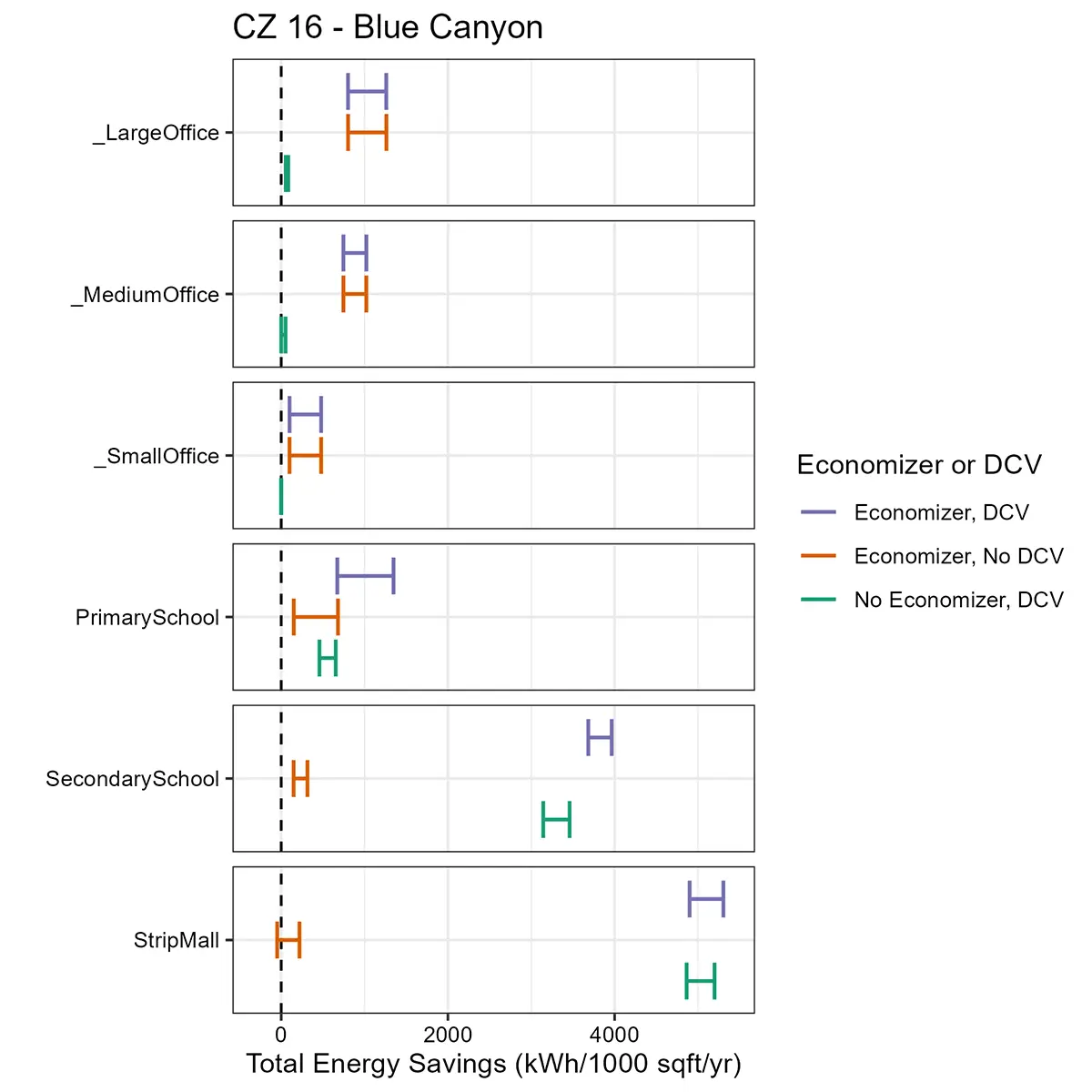Energy & Cost Impacts: Demand Control Ventilation Controllers
California’s 2022 Building Energy Efficiency Standards (Title 24) specify that the minimum ventilation for a fixed ventilation rate system must be the greater of 15 CFM/person or a calculation based on floor area, where the minimum area outdoor air rate (Ra) is specified in Table 120.1-A of the 2022 Building Energy Efficiency Standards. A DCV system is applicable in a subset of occupancy categories (Table 1). In these categories, the minimum area outdoor air rate can be reduced (min air rate for DCV) when occupancy is reduced, as determined by monitored CO2 levels. In occupancy categories other than Table 1, Title 24 does not allow a DCV system to reduce ventilation because rates are already low based on low occupant design density (e.g., private offices) or because ventilation is needed to mitigate other indoor pollutants specific to the occupancy category (e.g., chemicals used in a nail salon).
Table 1 – Occupancy categories from 2022 Building Energy Efficiency Standards (Table 120.1-A) for which DCV systems are applicable

The energy savings numbers provided in the plots below are illustrative. They are based on simulating EnergyPlus reference building energy models. The range of values represent a range of building vintages from Pre 1980 to Post 2004 for each commercial building type shown. There are three sets of plots showing Cooling Energy Savings, Heating Energy Savings, and Total Energy Savings per 1000 square feet, per year. The plots show saving values of systems that use an Economizer only, DCV only, or Economizer and DCV when compared to a baseline energy usage with no Economizer and no DCV. More details on the methodology used to perform the EnergyPlus simulations can be found here.
















































